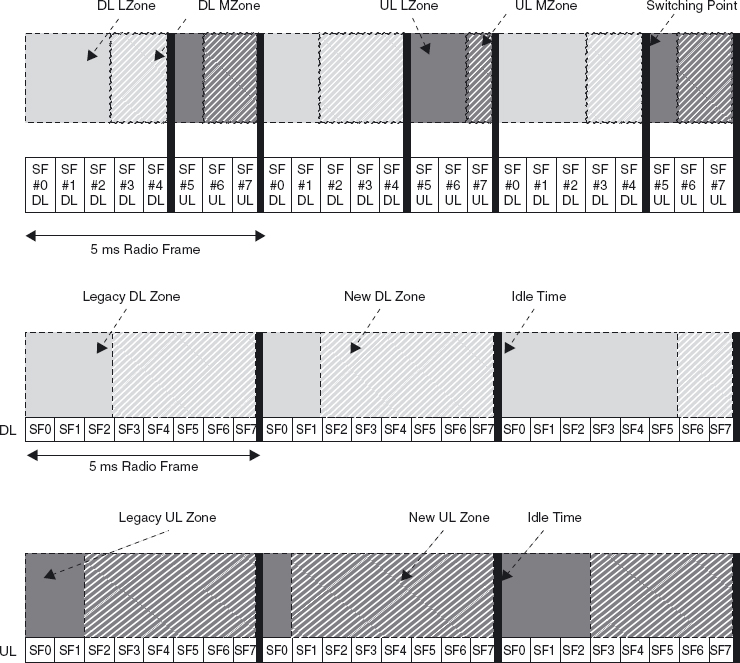Addressing and Connections Identification
In IEEE 802.16-2009, IEEE 802.16j-2009 and IEEE 802.16m, air interfaces are identified for the different elements (BS SS, RS, and MS) by a unique and universal 48-bit MAC address. This address is not used for identifying the MAC data PDU as in other IEEE 802.x technologies; rather, it is used during the initial ranging and authentication process. The standard also defines logical identifiers to facilitate data and control operations in the different operational modes (PMP, MR).
Logical Identifiers in IEEE 802.16-2009
A connection-oriented technology, IEEE 802.16 establishes a logical link between the BS and MS MAC layers that is identified by a 16-bit unidirectional Connection Identifier (CID). The CID is used in the MAC PDU header as a temporary address for the data transmission. Three types of management connections are defined:
- Basic: A mandatory connection established during initial ranging to exchange short, time-urgent MAC management messages;
- Primary: A mandatory connection established to exchange longer, more delay-tolerant MAC management messages; and
- Secondary: An optional connection to transfer delay-tolerant, standards-based messages such as Dynamic Host Configuration Protocol (DHCP), Trivial File Transfer Protocol (TFTP), and Simple Network Management Protocol (SNMP) messages.
Figure 4.9 Example of Time zones in TDD and FDD modes. Reproduced by permission of © 2009 IEEE.
Another logical identifier is the Service Flow Identifier (SFID) of 32-bit size. A service flow is a unidirectional flow of packets with a specified set of QoS parameters that may be provided through a network management system or created dynamically through defined signaling mechanisms. The BS is responsible for issuing the SFID and mapping it to a unique CID, which in turn is mapped to higher-layer addresses. The CS keeps track of the mapping of each upper layer unit by keeping tracking of several data elements such as the data units destination address, the data units' QoS parameters, source address and SFID and the respective CID.
Logical Identifiers in IEEE 802.16j-2009
The IEEE 802.16j amendment defines other logical identifiers that apply to MR mode. The standard requires assigning ntRSs a BS identifier with the same format of the BS identifier defined for IEEE 802.16-2009. Since connections established may span more than one hop in a relay cell, the CID is unique in the whole relay cell.
The amendment also defines a new connection type, called tunnel, that is established between a MR-BS and access RS. Tunnel connections are setup over a path that may include more than one intermediate RS. Two types of tunnel connections are defined: management, for transferring management PDUs, and transport, for either UL or DL traffic. Management connections are identified by the MT-CID and can be either unidirectional or bidirectional, while transport connections are identified by the T-CID and can only be unidirectional.
Logical Identifiers in IEEE 802.16m
An ABS in IEEE 802.16m assigns each AMS and ARS a unicast 12-bit identifier called the Station Identifier (STID). STIDs are assigned during network entry. An ABS may reserve some STID for broadcast, multicast or ranging. The amendment also identifies a 4-bit Flow identifier (FID) to connections. Similar to the CID, an FID identifies management and transport connections. Some FIDs may be pre-assigned. In Advanced relay networks, a tunnel connection is identified by the STID together with the FID.

